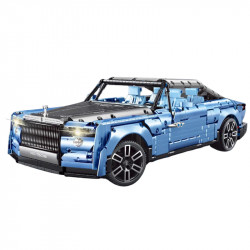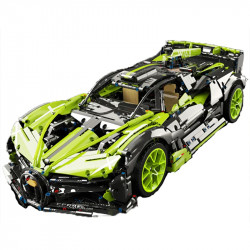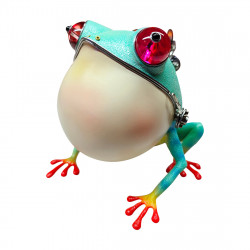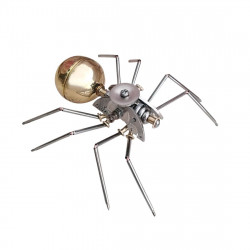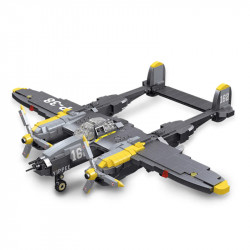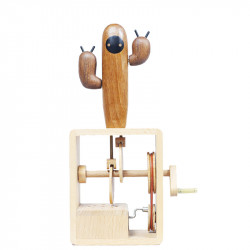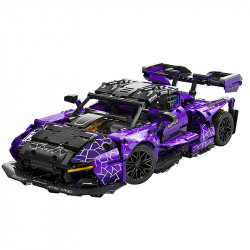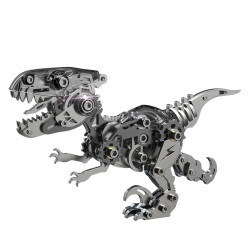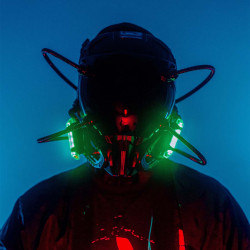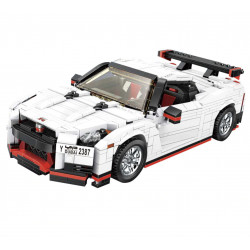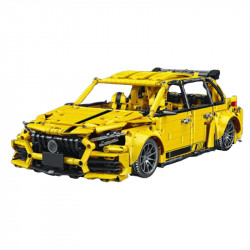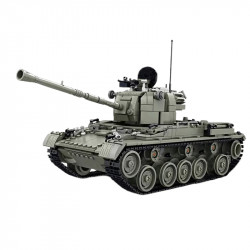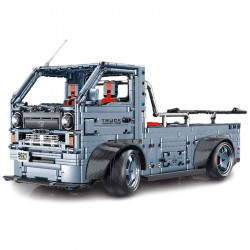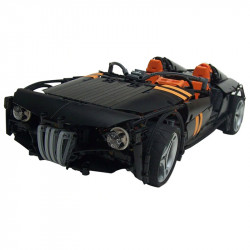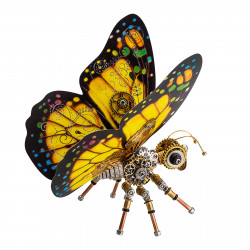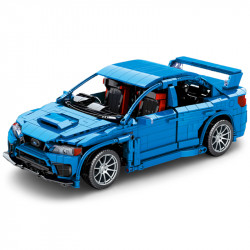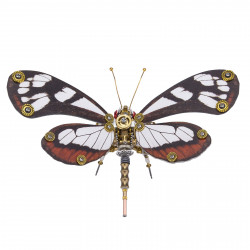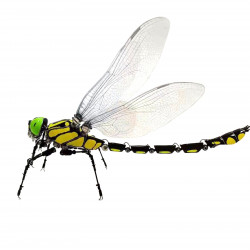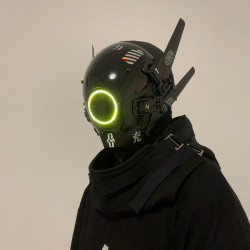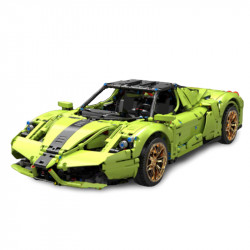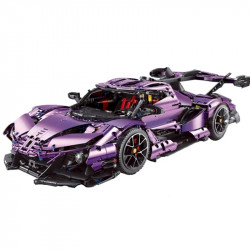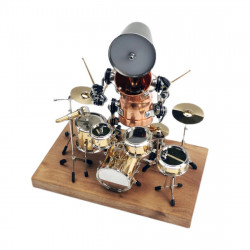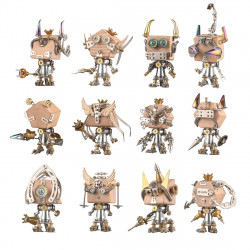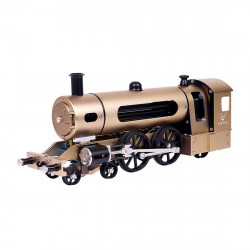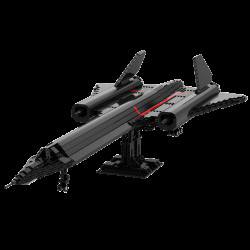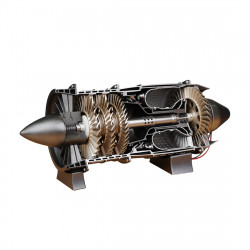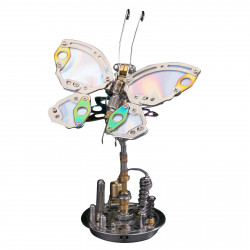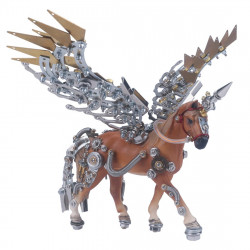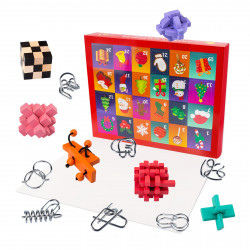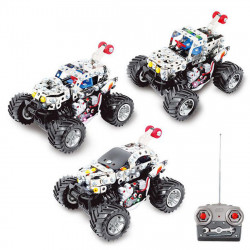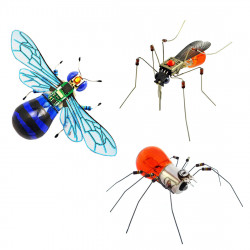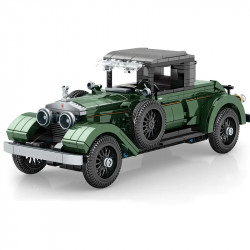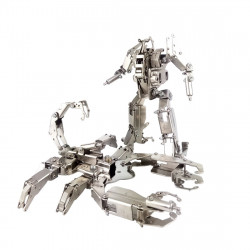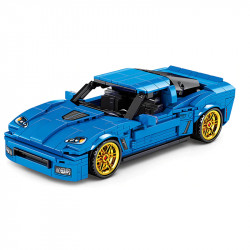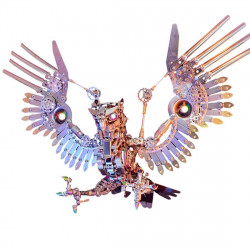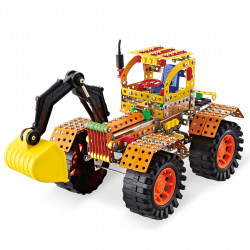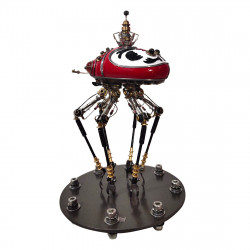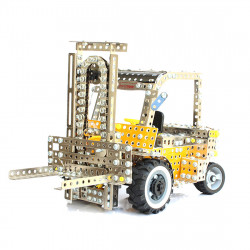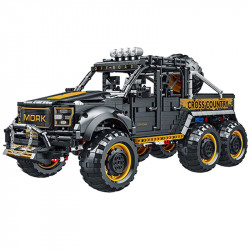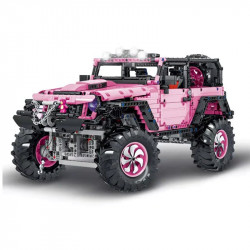Can You Paint Metal Earth Models? A Method That Works

Can You Paint Metal Earth Models? A Method That Works
An all-metal finish has a certain allure and looks fantastic when displayed. However, after creating numerous Metal Earth models, I started considering experimenting with other mediums. After all, one of the pleasures of any activity is experimentation. However, what is feasible? Although I had some assumptions, I was determined to learn the truth. This is what I wanted to know.
Are Metal Earth models paintable? Indeed. A straightforward 4-step procedure can be used to paint metal models with excellent results:
Using fine sandpaper, sand the metal sheets.
Using a spray, apply a fine metal primer.
While the metal components are still on their sheets, paint them all.
Start constructing using the pre-painted components.
This test case opened up a whole new realm of possibilities because I encountered remarkably few issues. However, allow me to describe my specific actions and present the outcomes.
The Metal Earth Model I Chose to Paint
This didn't require much thought on my part. When I dug through my stash, the Space Shuttle Atlantis kit immediately caught my eye as the ideal subject for my experiment.
The kit is inexpensive. Therefore, I didn't want to spoil it and be devastated.
It builds quickly—only one sheet of metal components.
It's a straightforward paint job. The shuttle has only two colours in real life, so painting it makes sense. None of NASA's shuttles has a natural metal finish, and their glossy white surfaces quickly identify them.
After selecting the kit, it was time to get to work.
Step 1: Sand the Metal Sheets
90% of the success of any painting project depends on preparation.
Because metal has a very flat surface, paint that requires some roughness to adhere will tend to be repelled. I used fine 400-grit sandpaper, which you can get from any hobby store or your neighbourhood auto parts store.
Remember to sand every component on its metal sheet while it is still together. Sand everything consistently and apply level pressure.
Although you will often paint one side of the sheets (the side with all the etched detail) when working with Metal Earth models, you should consult the instructions if you feel any areas you would like to paint that will be visible from both sides.
Step 2: Apply a Fine Metal Primer
I applied Tamiya's Light Grey Fine Surface Primer and heartily endorsed it as a superb product that gave me a flawless surface ready for painting. Because it lasts long, you can prime several metal models with a single spray can.
This primer could work well on Metal Earth because I frequently use it in my other hobby, plastic scale modelling. However, when I picked up the can, I saw the label read, "for plastic and metal." It's funny because I've always been interested in painting plastic and had never noticed that before. Thus, this increased my self-confidence.
I accomplished this in my hobby room since I'm lucky to have a spray booth that vents out a window. However, if there is little ventilation, do not try to use a spray can indoors. If necessary, you can complete it outside.
Just be careful—keep an eye out for hair and dust. At this point, I made a beginner error. After I sprayed the metal sheet, I saw several microscopic fibres in the priming coat. Aaaargh!
Don't freak out if you experience this. After the primer has dried and solidified completely, use tweezers to remove any remaining particles. The primer can then be gently sanded back in such areas using the 400-grit paper once again. I didn't need to apply additional priming because this cured it for me.
Quick Tip: If you're not accustomed to using the spray can for painting, avoid pointing it directly at the subject and shooting. This will cause the paint to "pool" and run. Instead, begin spraying off to one side and then sweep the spray flow across the topic, constantly keeping it moving. Don't stop anywhere.
Step 3: Paint All the Metal Parts on the Sheets
Once you apply a nice primer layer, you can see right away that you have a fantastic foundation for painting. Keep in mind that we haven't removed any pieces yet. Simply painting them on their sheets is so much simpler.
I stayed with Tamiya regarding the painting selection because it was the most convenient and had many Tamiya colours in stock. I specifically selected Tamiya X-2, a gloss white acrylic paint.
Once more, I'm blessed with an airbrush. Thus, I used Tamiya's acrylic thinner to thin the paint 1:1. However, if you don't have an airbrush, you may also use a spray can.
Alternatively, you can paint it with a brush. As you'll see in a bit, I also did some of that.
If you Google the space shuttle Atlantis, you will find many pictures. It was primarily white with black trim on the wings and around the cockpit. I could have airbrushed the black trim over the white to hide this. However, I also wanted to explore how Metal Earth would turn out when handpainted. Consequently, I grabbed a brush and a Tamiya X-18 semi-gloss black tin.
Although I am not an excellent brush painter, I was pleased with the outcome. Anyone with experience painting figurines, Warhammer, or similar items will perform far better than I did. However, this was an experiment, and I was rather pleased with the results.
I was also thrilled that primer and paint did not erase any etched detail! Everything was still as clear as we're accustomed to seeing on the exposed metal.
Step 4: Proceed to Building
We have now reached the well-known construction process. Usually, this is the entire procedure involved in creating a Metal Earth model. This time, however, it's only the final step, following the completion of the painting.
Since then, I haven't noticed any significant changes. Because of the priming and paint layers, several tabs were slightly thicker and more challenging to fit into their corresponding slots. However, that wasn't a significant issue. Everything happened precisely as it should have.
In Summary
This experiment went well. The process worked exactly as I had hoped, and the principles I tested are a proven base for me to continue experimenting with other models and colour schemes. It opens up a whole world of possibilities!
I have a Metal Earth Lancaster bomber in the stash that has to be constructed, and I'm considering trying a camouflage pattern on it right now! A lot of fun may come from that.
Thus...
Are Metal Earth models paintable? Of course. To my delight, I've finally found the answer to that question, and I strongly advise everyone who has constructed a few metal models to try it.
